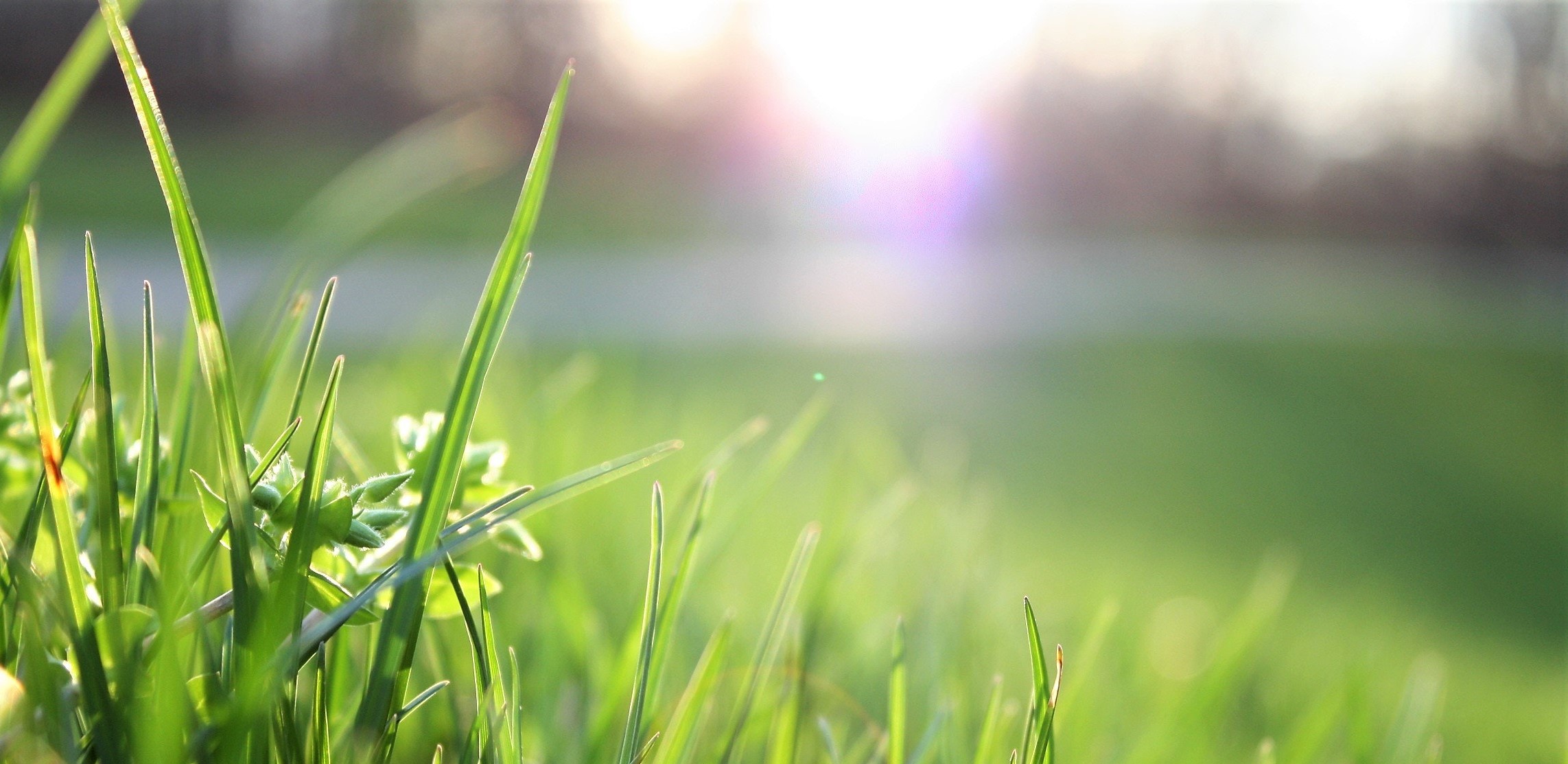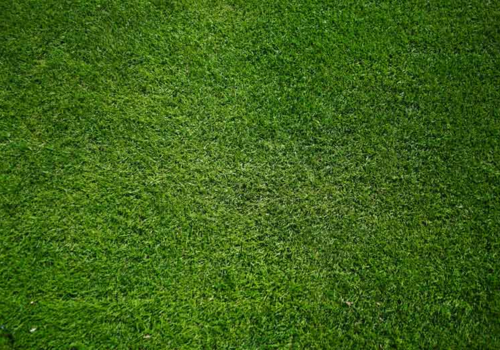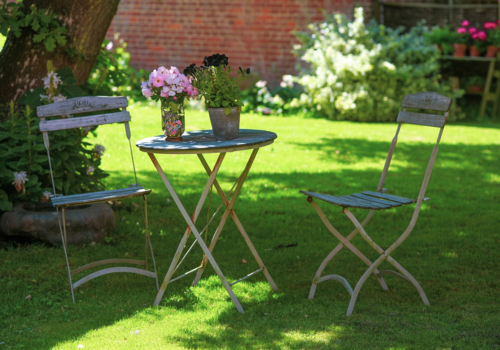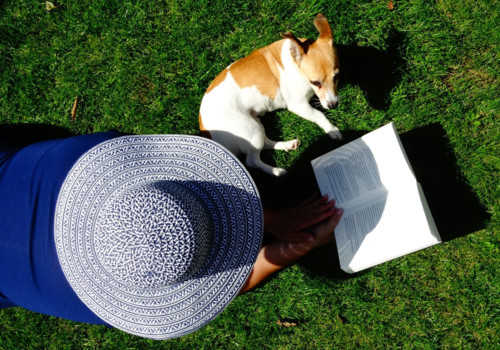
In this blog, we cover all of our top June lawn care tips for the late spring and summer season. It’s important to continue most of the lawn care tasks you started in May, and keep on top of all areas of your garden if you want to enjoy days outside in the sunshine.
So, if you're wondering what to do with your lawn in June, and you want to keep your lawn looking its best over the summer months, then read on. We'll cover everything you need to know about summer lawn care in the UK.
What should I do with my lawn in June?
In June, your lawn will need regular attention.
Grass growth begins to accelerate in June which means regular mowing - sometimes weekly. If the month is warm and dry, you may want to consider increasing the mowing height to reduce the amount of stress on your grass. Make sure to remove any weeds that appear and if you’re experiencing any dry spells or have new grass make sure to water your lawn appropriately.
If needed you can also apply a spring/summer lawn fertiliser to help give your lawn a boost.
Is it OK to mow the lawn when it's hot?
It's best to avoid mowing your lawn when it's very hot outside. But that's not to say you can't mow the lawn at hot times of the year, you just need to follow a few simple summer lawn care rules.
If it's hot and sunny all day, the best time of day to mow the lawn is in the evening. This helps to keep moisture in the roots and give the lawn some recovery time overnight before the sun comes up again.
It's also important to consider your mowing height. Cut the grass using the mower blades at their highest height when the weather is hot. This allows the lawn to retain more moisture and to help slow soil moisture loss.
To keep your lawn looking its best in June, it will require regular mowing. We recommend sticking to our above rules to make sure you care for your lawn whilst keeping it trim.
How often should I mow the lawn in June?
We recommend mowing your lawn once a week. This will create dense, green lawns as long as it’s not too hot. If it’s very hot and dry, cutting every 10-14 days is ideal.
Why is my grass turning brown in June?
Grass can turn brown in June due to lack of moisture, a disease, or due to foreign objects and substances that find their way onto your lawn. Here’s a closer look at each of these causes:
- Your lawn is dry: During a spell of very hot weather, lawns can dry out. This is even more likely to happen if you're mowing the lawn very short, and mowing whilst the sun is out or early in the morning. All these factors damage the moisture levels in the soil until it doesn't hold enough for the grass to thrive.
Solution: Water the lawn in the evenings and hold off the mowing to help bring your grass back to a healthy, green state.
- Lawn diseases: Most lawn disease tends to strike in moist weather, usually at the end of summer, in autumn or winter. This is the least likely cause of your grass turning brown during June.
Solution: Test the lawn to identify the disease; consider applying a chemical treatment to treat it, or, get in touch with a professional to help.
- Objects or substances affecting growth: If your lawn has some brown patches and you've ruled out any lawn diseases, the problem may be due to a substance or object harming the grass. Any furniture or toys that completely block out sunlight will eventually kill grass. If there are no objects responsible, there may be a substance affecting grass growth. The main culprits are usually spilled petrol and oil, dog urine, or an overdose of weedkiller, moss killer, or fertiliser.
Solution: Keep moving your furniture to give the grass a chance to recover. If you don’t have furniture and think it’s a substance, try to identify the cause to avoid further damage. You might need to repair these patches by overseeding them with a suitable grass seed.
A little extra lawn care can help to banish a brown lawn, so make sure you put the work into your lawn all year round.
Is June a good time to overseed my lawn?
Generally speaking, June isn't the best time to overseed your lawn. It is a little too late in the year for sowing grass seed and providing the best conditions for germination. The spring is ideal for this.
That being said, you can seed a lawn in June, but you'll need to put in extra work. Make sure any new grass is regularly watered to give it the best chance of healthy growth.
If you’re planning to seed a new lawn, June can be a good time to do any deep soil cultivation so it has time to settle before you sow lawn seed in August or September.
Can I rake my lawn in June?
In short, no. It’s not recommended to rake or scarify your lawn in June.
Warm weather conditions give the lawn little recovery time and exposing the soil will cause it to dry out. You could risk killing the grass if you rake or scarify at this time of year. If you need to clear debris, leaves and moss, it’s best to wait until autumn to carry out this lawn care task.
What fertiliser should I use in June?
During June, you should use a spring and summer lawn feed to make sure you’re applying the correct balance of nutrients.
When you’re feeding the lawn in the summer, you’ll need to make sure the soil isn’t too dry. It’s best to wait for rain or water thoroughly so there is enough moisture in the soil to allow the grass plants to absorb the nutrients. You might also need to water after you apply fertiliser so that the feed is thoroughly absorbed.
Lawn Care: June Tasks
Keep your lawn looking fabulous with these extra spring and summer lawn care tips:
- Weed Control: If you’ve been following our lawn care calendar, you will have tackled weed control in late spring to stop them spreading through your lawn, but any that persist can be treated through the summer or removed by hand.
- Moss: As moss dies back in summer, it might start to leave brown patches in your lawn. You’ll need to plan to scarify your lawn to remove this in autumn, but to avoid lawn damage, try to live with it for now!
- Lawn Repair: During the spring and summer months, you’re likely to use the lawn more often. This can cause wear or damage, especially if you have children or pets. It’s a good idea to keep rotating the areas you use to minimise wear in one area. Any areas of heavy use should be watered, aerated and fertilised to help them recover. Only apply seed if conditions are favourable or if you can commit to regular watering, otherwise wait until the autumn for this.
- Aeration: This beneficial task should be carried out in June, but only where required. Aeration can dry out the soil so just use a garden fork to work on any areas of high traffic. This will improve compact soil without drying out the rest of your lawn.
- Watering: If you feel the lawn needs water, it’s important to consider timing. It’s a good idea to water in the morning, before the sun comes up. Watering lawns at night can leave them vulnerable to disease.
Now you’ve learned about our top lawn care tips for June, it’s a good time to go and tackle some of those tasks before things really start to heat up in July!
For more help and advice on lawn care throughout the year, check out our monthly lawn calendar. It’s full of advice for spring, summer, autumn and winter care. Or, if you're looking for some lawn care tips for the coming months, take a look at our next lawn care guides:
How we can help!
At Boston Seeds we take pride in excellent customer service. If you're growing a lawn from scratch but unsure how much grass seed you need, our handy Grass Seed Calculator can help you figure it out in just a few clicks!
With Next Day Delivery on hundreds of items too, choosing from our extensive range of grass seed couldn't be easier. Ordering regularly or looking for large volumes? Click here to apply for a trade account today - we review all applications within one working day. If you have any questions, then please get in touch.


